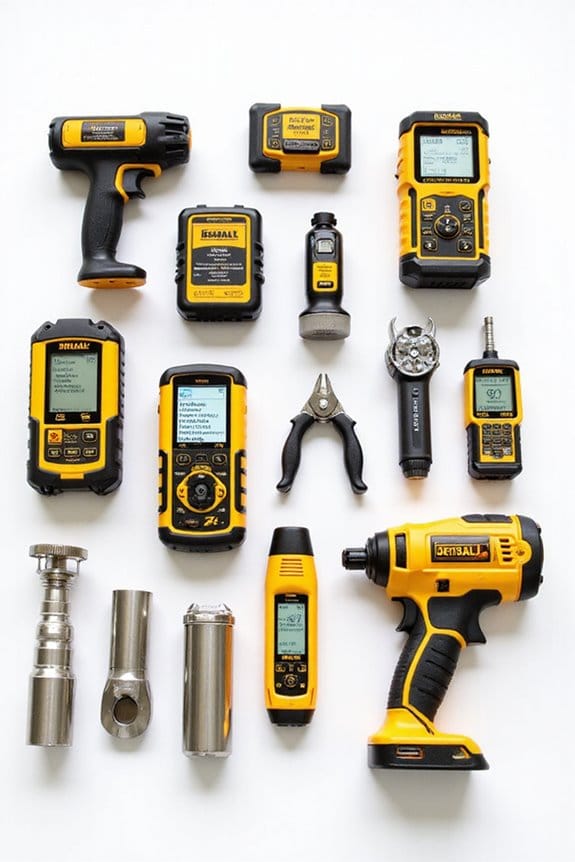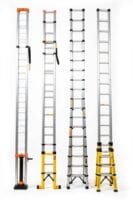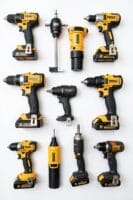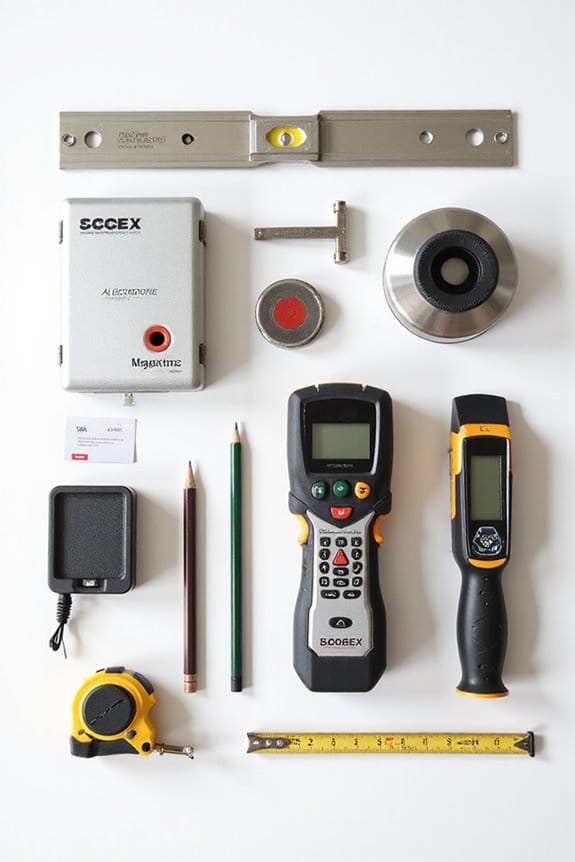When it comes to finding studs behind your walls, there are several types of stud finders to evaluate: 1) Magnetic Stud Finders – they use strong magnets to find nails and screws. 2) Electronic Stud Finders – these detect changes in wall density for better accuracy. 3) Laser Level Stud Finders – they offer laser leveling while detecting studs. 4) Multipurpose Wall Scanners – great for finding metal and wires too. 5) Professional-Grade Stud Finders – high accuracy, perfect for serious projects. Stick around, and I’ll break down their features next!
Key Takeaways
- Magnetic Stud Finders detect metal fasteners with strong magnets, ideal for simple jobs and budget-friendly for beginners.
- Electronic Stud Finders offer higher precision by detecting changes in wall density and often include features like live wire detection.
- Laser Level Stud Finders combine stud detection with laser leveling for precise alignment, allowing for easy one-handed operation.
- Multipurpose Wall Scanners detect wood, metal, and live wiring with adjustable sensitivity and provide real-time visual and audible alerts.
- Professional-Grade Stud Finders utilize advanced sensors for maximum accuracy, often featuring radar technology to visualize wall interiors on LCD screens.
Magnetic Stud Finders
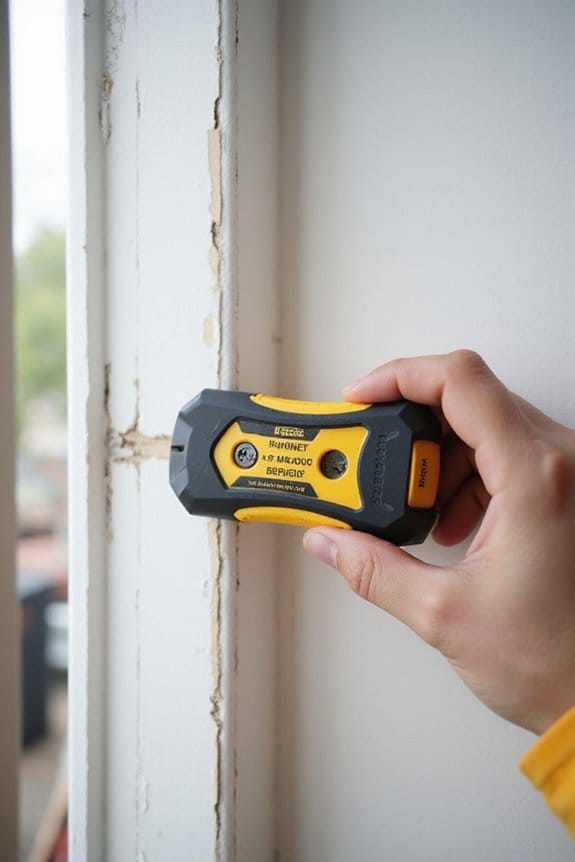
When it comes to finding studs in your walls, magnetic stud finders are a fantastic option—one of the simplest tools in your DIY arsenal. They work by detecting metal fasteners like nails and screws, thanks to their strong neodymium magnets. Here are a few key points to examine:
- Magnetic Strength Comparison: Look for models with magnets rated between 5 to 20 pounds for ideal detection.
- Design Features: Many are compact and come with protection pads to avoid wall scratches.
- Maintenance: They’re virtually maintenance-free, which is a blessing for busy DIYers!
Just remember, if fasteners are missing or poorly installed, your stud-finding adventure might hit a snag. High accuracy rates in stud detection can enhance your overall experience with this tool. Happy hunting!
Electronic Stud Finders
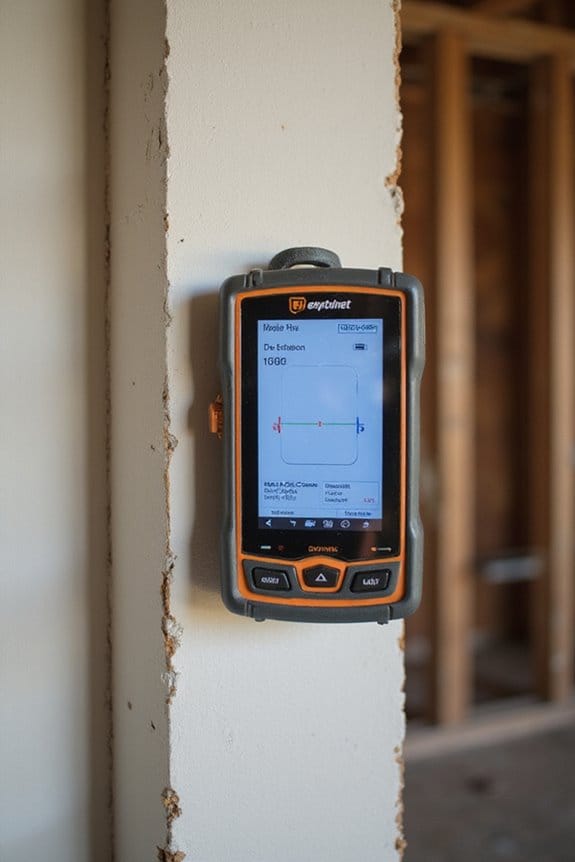
Magnetic stud finders are handy, but if you’re looking for something that takes stud detection to the next level, electronic stud finders might just be your new best friend. Here’s why:
- Accuracy: They detect changes in wall density, making them generally more precise than magnetic options.
- Edge Detection: Some models focus on the edges of studs, which is great for knowing where to mount things. They can indicate boundaries about an inch away, so you’re not left guessing.
- Center Detection: Others use two sensors to pinpoint the exact center of a stud. This is ideal for heavier installations, ensuring your shelves don’t end up on the floor.
With added features like live wire detection, electronic stud finders are a worthy investment for any DIY enthusiast! Additionally, models like the Franklin Sensors ProSensor M210 boast multiple sensors for enhanced accuracy and reduced false positives.
Laser Level Stud Finders

Laser level stud finders are a game changer for anyone involved in home improvement projects. They combine stud detection with laser leveling features, making it easier to achieve laser accuracy. Here’s why I love using them:
- Dual Functionality: These tools detect wood and metal studs while projecting laser lines for precise alignment.
- Easy Marking: You can mark edges and centers of studs simultaneously, saving time and effort.
- Continuous Scan: With a simple trigger, you can scan multiple studs without interruption.
- User-Friendly: The ergonomic grip and bubble level vial make one-handed operation a breeze.
Just remember, while they’re fantastic, they typically don’t detect wires. So, safety first! Overall, I can’t recommend them enough for quick and accurate projects.
Multipurpose Wall Scanners

Stud finders have evolved quite a bit since the days of just detecting wooden beams. Now, multipurpose wall scanners offer multi-function capabilities that make them indispensable. Here’s why I think they’re great:
- Versatility: They detect wood, metal, and even live wiring. No more guessing what’s behind your walls!
- Detection Accuracy: With adjustable sensitivity levels, you can fine-tune how deep you scan—great for avoiding those awkward plumbing surprises.
- User-Friendly: Visual displays and audible alerts guide you in real-time. You’ll know when you’re right on target.
- Safety First: The live wire detection feature keeps you safe from electric hazards.
These scanners are fantastic for DIY projects or professional work. Trust me, they’re worth the investment!
Professional-Grade Stud Finders

When you’re tackling a project that demands precision, professional-grade stud finders are the tools you’ll want in your arsenal. They come packed with professional features and advanced functionalities that make your job easier. Here are a few key points:
- Electronic Stud Finders: These use sensors to detect wall density changes, giving you a precise location of both wood and metal studs.
- Radar Stud Finders: They offer the highest accuracy, visualizing wall interiors on LCD screens. Sure, they’re pricier, but think of them as an investment.
- Magnetic Stud Finders: No batteries needed! They’re great for quickly locating metal fasteners.
With these tools, you’ll be ready for anything—no more guesswork, just solid, accurate results!
Budget and Basic Stud Finders
Looking for an affordable way to locate studs in your walls? Budget options like electronic and magnetic stud finders are perfect for DIY enthusiasts like me. Here’s what you need to know:
- Electronic Stud Finders: Priced under $40, they detect wall density changes. They’re compact and easy to use but lack advanced features like live wire detection.
- Magnetic Stud Finders: Usually under $15, these detect metal fasteners. They’re simple and reliable but depend on the fasteners’ placement.
User experiences show these tools work well for light projects, like hanging pictures. Just remember, they may take a bit longer since you often have to locate the stud center manually. Still, they’re fantastic budget-friendly tools for everyday needs!
Features of Magnetic Stud Finders
If you’re diving into the world of home improvement, magnetic stud finders can be a game changer. Here’s why I love using them:
- Magnetic Sensitivity Features: They utilize powerful rare-earth magnets to locate screws and nails. Some models offer up to 27 pounds of pull strength, making detection through drywall a breeze.
- Ergonomic Design Advantages: Many are compact and have no-slip grips, making them easy to maneuver. Plus, some include a built-in bubble level—talk about nifty!
- No Batteries Required: They’re ready to use right out of the box, so you won’t be left fumbling with batteries.
Advantages of Electronic Stud Finders
Electronic stud finders are a fantastic tool that can really elevate your DIY game. Here are some advantages that make them stand out:
- Accuracy: They use advanced detection technology, ensuring you find studs without drilling into wires or pipes.
- Speed: You’ll locate studs in seconds, making tasks like hanging frames a breeze.
- Versatility: These devices work on various wall materials, so you’re covered whether it’s drywall or concrete.
- User Experience: Features like LCD displays and audible alerts make them easy to use, even in low light.
- Convenience: Battery-powered and ergonomic, they’re designed for comfort and portability. Additionally, their functionality can greatly enhance your overall safety and reliability when working on electrical installations.
Trust me, once you try one, you’ll wonder how you ever managed without it!
Applications of Laser Level Stud Finders
When you’re tackling home improvement projects, you’ll find that laser level stud finders can be game-changers. Here are some applications that’ll make your life easier:
- Perfect Alignment: Use laser alignment techniques to hang pictures or shelves, ensuring everything’s straight and level.
- Interior Design: They’re fantastic for mapping out walls, helping you avoid crooked installations in remodeling tasks.
- Precise Leveling: With both horizontal and vertical lines, you’ll save time on manual measurements when framing or tiling.
- Stud Detection Accuracy: Locate studs securely for heavy fixtures, avoiding any surprises during installation.
- Construction Use: Ideal for handymen needing real-time verification of surfaces, enhancing both safety and convenience.
- Enhanced Efficiency: Utilizing tools designed for accuracy in measurements ensures that your projects are completed with precision and reduces the likelihood of errors.
Trust me; once you try one, you won’t look back!
Choosing the Right Stud Finder for Your Project
Have you ever found yourself staring at a wall, unsure which stud finder to grab? Choosing the right one can feel overwhelming, but it doesn’t have to be. Here’s a quick guide to help you:
- Magnetic Stud Finders: Great for simple jobs, they’re budget-friendly but may lack accuracy on complex surfaces.
- Electronic Stud Finders: These offer better accuracy and user experience, especially on varied wall types. Look for features like wire detection!
- Radar-Based Stud Finders: If you want exceptional accuracy factors and are okay with spending more, this is your pick.
Consider your project needs and budget. A good stud finder can make all the difference in your DIY success!
Frequently Asked Questions
How Do I Calibrate My Stud Finder Before Use?
To calibrate my stud finder, I use specific calibration techniques. I make certain it’s flat against the wall, press the calibration button, and check for stud finder accuracy before starting my project. It’s essential for reliable results!
Can Stud Finders Be Used on Textured Walls?
Absolutely, I’ve used stud finders on textured surfaces, and while it can be tricky, some wall types work better than others. Adjusting sensitivity and scanning deeper really helps find those studs accurately.
What Is the Typical Battery Life of Electronic Stud Finders?
Think of battery longevity as the heartbeat of your electronic stud finder. Generally, they last 6 to 10 hours, but with efficient features, you can stretch that time, ensuring accurate scans without frequent replacements.
Are There Any Safety Precautions When Using Stud Finders?
When using stud finders, I always follow safety guidelines. I check for live wires and avoid damp walls. User precautions like wearing goggles and ensuring a clean workspace really help prevent accidents during installation.
How Do I Interpret the Signals From My Stud Finder?
Interpreting stud finder signals feels like deciphering ancient hieroglyphs! I’ve learned to trust the beeps and lights; they’re my secret buddies guiding me to stud perfection. Just remember—patience is key for signal interpretation!

